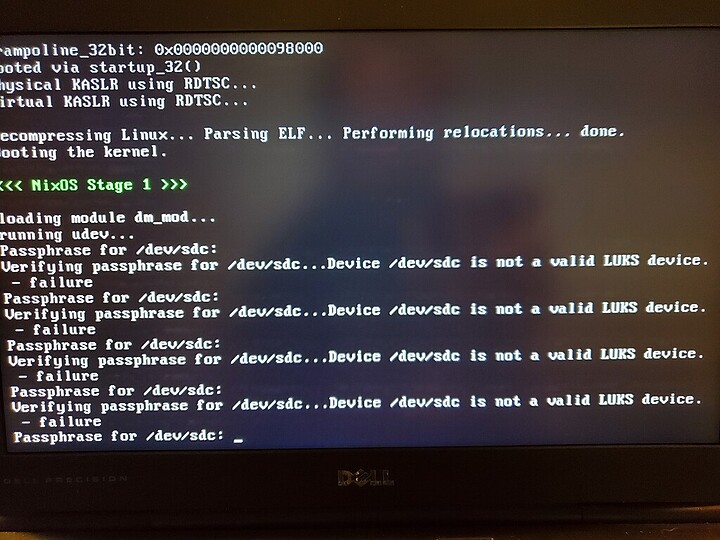Greetings Folks! I’m Tyro!
According to Webster, Tyro means “: a beginner in learning : novice”, which… folks, this is a sure understatement. In fact, it may be far too generous. TotallyF’nClueless would probably be a better name at the moment. But, in time, with help… with generous amount of help really, not to mention all the efforts I’m going to need to make, to push, and enforce through so much information past this rind and skull… that cluelessness should fade in some amount. And… as I’ll always be a beginner in learning something, it seemed about right. It’s about my present knowledgeable state, but also about a philosophical consideration too. And, in my choosing of it to be my identifier here, it’s also a question. How will this name look to me, to you, 5 years from now? I look forward to answering that, should I be able.
I am here to learn. This, I hope, is to be my self teaching grounds. I hope I’ve chosen wisely. I hope I can do all I wish to achieve. I hope I don’t destroy what… is very very expensive to replace, if I could at all. I hope I hope I hope, so, indeed… I’m certainly at ground floor in my learning. All I have right now is hope.
Yet, that’s not entirely fair to myself. I’ve been in some way self teaching about these silicon contraptions since. Oh… must be about around when my father was tinkering about with his Gateway PC. The Box was a COW! moo. Then after that, back when TechTV was a thing, Leo Laporte and whatever endeavors he was working on helped get me up to speed on all things tech. Still does, thanks to twit .tv, though I must admit I don’t really consume upon as much as I probably should.
And, indeed, in retrospect, I also did some pretty fancy “Kiddie Hacker” stuff overclocking a laptop (Thanks Guru3d)… I now know I could have caused it to burst into flames, what I did then was far riskier then I realized… but, I eventually did get the end result. New visual options in the games I was playing at the time, which were disabled at default spec. My young self did a victory lap for that, it was just so cool.
Then to now, I find myself in a strange state in my understanding. One where, I can smell the greener grass, but know not the journey I need to take. I can walk on my own two feet, and am aware of names, of a little basic surface this and that. But the passes, pitfalls, warnings… I need my own fellowship here to throw this ignorance into the fire! It’s a most uncomfortable gray, knowing enough to know you don’t know about (off the top of ones head)…
- Virtual Machines
- Memory Partitions
- Home Servers
- Networking
- File Systems
- Linux
- Command Line
- World Domination
Some pretty broad things in there, I know. That’s just a taste, the real nitty gritty is next.
The day I created my account, this account right here, was the day I got my Framework 16 Laptop. It’s to be my hands on playground, for the moment. Also relevant, is my AMD Ryzen Threadripper 1950X PC, which now grows long on the tooth in some ways, and in others still can hold it’s own, configured properly. Oh, and one more thing, from this point on -if it is in my wise power to do so- upon any computer I administrate, Windows (at the very least) will NEVER touch bare-metal again. Admittedly, that is a well aired rant for another day, short to say I remember when the idea was to make sure you weren’t installing a virus, even if a-bit a useful one.
Alright! So enough reminiscing, history lessons, hows and whys and BEHOLD; My Ambition! (For-which-I-am-too-stupid-to-reliably-fulfill-at-present-per-mentioning-in-my-previous-utterances.)
TL;DR (#1)
Framework 16 Laptop
- It’s a modular laptop, so let’s go all in. I’ve got 96GB of unofficially supported (max size officially supported is 64GB) ram, and gosh darn it, I mean to use it! The Proxmox Virtual Environment will be it’s primary, and from there, an assortment of OS’s to play with. Ubuntu, CentOS, Debian, Fedora, and… ultimately… NixOS. HUGE learning potential, both in the process of implementation and resource. If I screw up, just make a new machine. I also intend to add a VERY locked down Modern Windows, as well as create an image of the (as I can’t seem to find my installation media) Windows 10 LTSB (note the “B”) OS I have running on my Threadripper Computer.
Framework 16 Laptop Notes/Stretch Goal
- Frankly, what I would like to do may very well be overkill. Windows exists for me run my Windows exclusive programs, so frankly, I could very well focus instead on just bare-metal Linux, and use Docker Containers… as I understand it, I don’t know, to run whatever Windows exclusive program nonsense I want. But, again… I know names of things, not what it takes for the use of things. I’m going to screw up, and hard, so… I need to start with something that will let me do that without harm. Hopefully.
I’ll also add here that I’ve already installed Ubuntu LTS (only due to Framework offering full support) with in a partition (thanks internet). I have mostly no idea what a partition is, if the sizes I chosen are too big, too small, what anything means. Big Ol’ guessing with interspersed knowledge, plus the little help I got from the guide I found. I’ve done this as to test the hardware, make sure all things come on, not to mention… as EVERYTHING is new here, I need a back up in case I screw up the Proxmox Virtual Environment implementation.
WOO! Neck deep baby!
As for my AMD Ryzen Threadripper 1950X PC, well, a moment of preamble. This PC has been… in a holding pattern for quite some time. I knew the risks when I managed to, through official channels now gone, to get Windows 10 LTSB on this machine. I knew that at some point, things that I would need to update on here would start to break, and I had a plan for that in getting updated “LTSB” (LTSC) versions . What I didn’t plan on, for reasons, was the extensive *uckery against the word “Perpetual”. If uninstall or in anyway edit some of my Perpetual Standalone products, I won’t be able to put them back on thanks to Greed-tastc *uckery. And since this has been, before now, my ONLY computer, all I could do was wait, and save what cash I could. All in all, inadvertently trapped.
But now?
Ahh! After 10,000 years I’m free! Time to conquer Earth!..er, um… *Ahem* I mean, here is what I’m thinking about doing with my…
TL;DR (#2)
AMD Ryzen Threadripper 1950X PC
- 64 Gigs of Ram, Plenty of CPU Cores, not to mention the workstation Vega GPU (the !only! card I could get at the time ~_~), this thing was made to gallop. Even 6 or 7 years later, there is still a fair amount of room to play with here, configured correctly. The laptop comes first, but, provided I learn my learnin’, I’d like to (some option of, mix and match?)…
- Proxmox Virtual Environment
- Docker Containers
- Media Server
…and to really stretch things…
- Build my own “AI” Generator
- Build my own Smart Home Hub, with Octave/Code Keyed Voice Commands.
- Build Human Shaped Automaton; commence world domination, over throw governments, and distribute free ponies/puppies/platypuses.
Admittedly, I’m so seemingly far away right now to ripping apart this machine into something new in purpose, that I’ve not put too much thought in what its new life or extent of purpose shall be. Just vague ideas and stretch goals at this point. I just know that since I have it, might as well use it.
…Well Gee, that is a lot of stuff, anything else? /s…
Well, actually, yeah. I wanna build my own router and flash it to Openwrt. Or maybe I’ll get something from pfSense or opnsense? Then Pi-Hole. WireGuard. All that jazz. It might be a Pi or some miniform or something else.
And, I know NONE of how to do this, just names really. Have I said that already?
…Heh heh heh, well, at least I’ll have something to do. ¯\_(ツ)_/¯
Conclusion
I know. It’s a whole lot. Probably fair to wager that all I want to learn is a solid few semesters worth of Information Technology stuff from all sorts of disciplines. And that I want to do this, to teach myself this tech, this protocol, this how and why and what it means and how one thing effects another… now that I have the ability to hands on with out fear.
I recognize that this project, this… massive massive project in whole, built among many parts, might be too big for even here. How do I learn all this without spamming this forum with my questions? Can I? Can I and still learn? How much to I leverage in search, against making a post (or bumping a post) and asking the direct question? I don’t know.
But! As someone who has been conceptualizing for far longer then he ever wanted, let me tell ya, at the end of the day, the only way to do it, is to do it. And then adapt to the result as needed. And my excitement is palpable.
Taking chances, making mistakes, and getting very very messy,

















